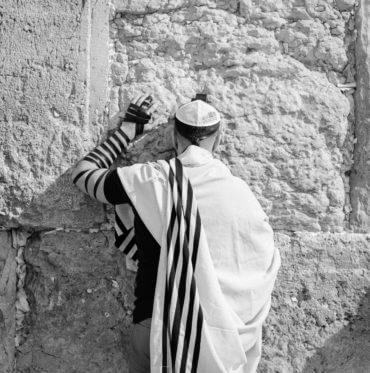
How To Find the Right Orthodox Community For You
All that is gold does not glitter,
Not all those who wander are lost;
The old that is strong does not wither,
Deep roots are not reached by the frost.
– J.R.R. Tolkien
The journey to and from Orthodox Judaism can leave people bruised. If you’re coming in, your family may reject your choices and your new adopted community may waste no time telling you where you’re missing information. This can be overwhelming. As a ba’al teshuva myself, I know first-hand how much strength and resolve is necessary to make it to a balanced halachically observant life, and I’m still nowhere near where I’d like to be in the development of my Torah knowledge and personal character development.
For some, the pressure at the beginning is just too much, and they go back to their old ways of life. For others, the family rejection is so strong and the knowledge gap between their current state and their surrounding community is a reason to “flip out,” take on everything at once, start dressing in a suit, speaking in “frumspeak,” change their hand motions, effectively erase their past, and act like they’ve been this religious all along. In between these two extremes lies a large spectrum of methods. I’d like to think I’ve been moderately successful at remaining authentically “me” while adopting a halachic life, but everyone has their own definition of normal, so it is hard for me to say.
If you’re leaving Orthodox Judaism, the road is no less rocky. As I’ve found in my work with Makom, the road can be incredibly rocky even if you’re not leaving Orthodox Judaism, but just looking for a new community to better suit your personal needs. At Makom, we aim to help people who are looking to transition to a different denomination of halachic Judaism. We see people who grew up in Hasidic enclaves who would like to move to a black hat community. We also see people who grew up in Yeshivish circles who would like to transition to a Modern Orthodox community. As you can imagine, we see every permutation of these variables, including people who originally wanted to leave the Jewish community entirely but are now rethinking their choices and would like to get re-involved in the halachic life again, just not in the Hasidic way.
As our members experiment to find what works for them, sometimes they or their family get nervous that they’re going to remain in their current position forever. We encourage people to continue exploring until they find what works for them, and to try and feel comfortable with the fact that finding one’s hashkafa is a journey that can change as their life changes, and that their inability to fit into someone else’s box is neither a moral failing nor a personal weakness.
Carl Jung, one of the founders of the field of analytical psychology, calls this tension the process of individuation. Jung believed that consciousness is selective, and the ego is the part of the self that selects the most relevant information from the environment and chooses a direction to take based on it, while the rest of the information sinks into the unconscious. Individuation is the process of harmonizing the competing desires of the conscious and the subconscious mind into a cohesive sense of self. As someone tries to understand themselves and combine their conflicting desires into a cohesive whole, they may experience different versions of their self over time. One of the challenges with breaking out of a group is that while the other members of the group may have caused you grief that you were conscious of, they also provided with emotional support that you only processed unconsciously. Being part of a group that speaks your language, knows your neighborhood, practices your religion, and knows what your childhood was like. As someone tries to individuate, they may run from the conscious damage done to them by their ingroup, but their unconscious will pull them back out of fear of being alone. Makom tries to provide an alternative environment to meet people who may understand an ex-Hasid’s life experience, but the family and community of origin cannot be rooted out of the unconscious memory during the individuation process.
This is where the real test comes in for the religiously transitioning individual and family of people who are religiously transitioning. What are some practical ways we can make the transition easier?
- Remember that the work is never finished. As I went from College to Yeshiva to Graduate School, I would have given you a different answer as to what my hashkafa is at each point. The underlying focus was the combination of my personal talents with the life structure that Halacha provides. I have identified as Modern Orthodox, Yeshivish, Modern Yeshivish, and Neo-Hasidic (so hip, I know) at different points in my process. While all of these were interesting phases to go through, the most important goals throughout were a never-ending search for something that felt consistent with my halachic principles and my “authentic self.” In my mid-twenties, the feeling of authenticity was hard to find and harder to hang onto. Forgive yourself, make boundaries that you’ll never cross (Kosher, Negiah and Shabbos, for example,) and then feel free to explore.
- Find a Rav you trust. Sometimes people try and fail to connect with their family’s Rabbi. This can be frustrating for all parties involved, including the Rabbi. Everyone involved may have good will and a desire to make things work, but sometimes it is just not a fit. Ask around, see if your friends have someone they have found to be encouraging of hashkafic exploration as you go through this phase of identity formation who can keep you grounded halachically in the process.
Keeping these ideas in mind, go out and explore different hashkafas, different shuls, visit families and ask them how their hashkafa has helped them connect. If you’re a parent, don’t panic. This can be painful, but at the end of the day what matters is connection to Hashem, not the specific style that that avodah takes.
If you found this content meaningful and want to help further our mission through our Keter, Makom, and Tikun branches, please consider becoming a Change Maker today.







